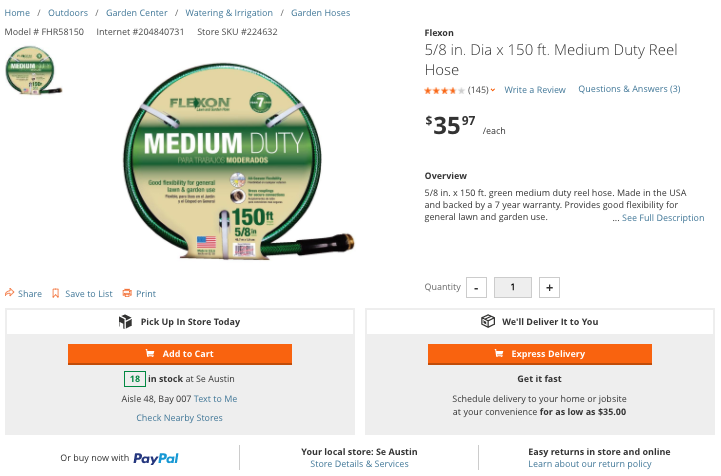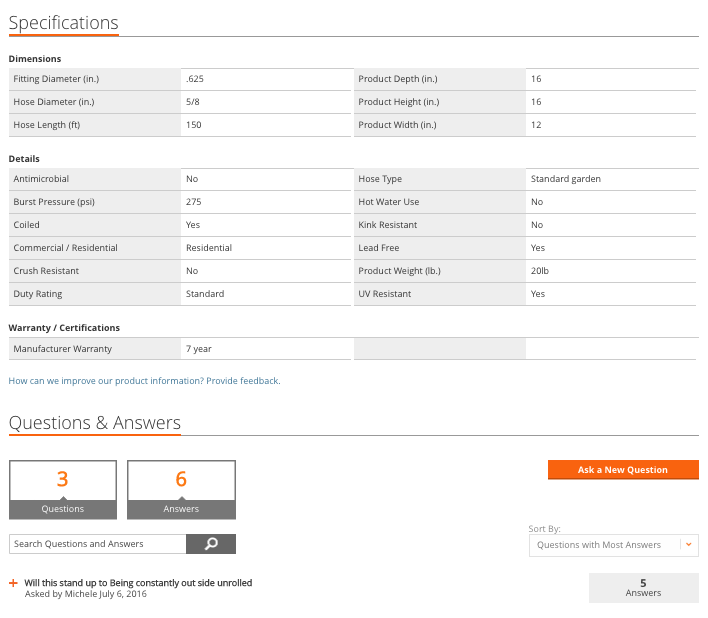
Today’s headlines often focus on how major retailers are trying to adjust to changing consumers habits. We hear a lot about Macy’s, Sears, and Wal-mart — but what about the brands that sell their products at these retailers? They are also trying to navigate the evolving landscape of retail. From the rise of Amazon to the adoption of direct-to-consumer models and influencer marketing, the game is changing for brands, and the road to success is getting more complex.
“As a long-time brand manager, I can say the terms change every year,” says Eric Pearlman, the executive director of marketing at Flexon Industries, a US manufacturer of lawn, garden, and wiring products. “At one point, it was consumer-centric marketing, now it’s omnichannel. As e-commerce and the online sphere continue to evolve, it’s having a big effect on how marketers go to market.”
To better understand how industry changes are affecting brands, we sat down with Pearlman to learn how he builds brand awareness and wins customers.
As a smaller manufacturer, how do you build brand awareness?
My general approach is to think around every single touchpoint — make sure our messaging online, in the store, on our packaging, and through our promotions all aligns. At Flexon, I’ve been doing a lot of the basics such as developing a digital strategy and our positioning work.
Our approach to 360-degree marketing starts at the store level. Since our customers make their decision at the store, it’s vital that we present ourselves the right way. That begins with figuring out what we want to communicate in our packaging and making sure it reinforces our positioning.
This then extends to to the retailer level, so I can find out what opportunities and insights they have to offer. At present, that means I’m double checking that all our messaging lines up.
After we do all this, we then turn to social media and other channels that let us communicate with our current customers and interested consumers. 360-degree marketing might sound like a buzzword, but for us it’s simple: We make sure we’re telling the same story across all of our touchpoints and figuring out what areas we might be underperforming in that consumers want.
How do you approach your positioning work? What does that process look like?
It’s internal, and it’s external. On the internal side, you have to figure out what your company values are, what you’re good at, what you’re bad at, and what problems you’re solving for consumers. The second is looking at the competitive framework and doing some investigative research into how other players in the market are operating and what they’re doing to position themselves. Finally, the third leg is figuring out your aspirational goals — things like where you want to get to and where’s the white space that you can operate in.
That might seem complicated, but it’s really common sense. You have to figure out who you are, where you want to go, where the competition is, what your unique voice is, and where you fit in the mix.
Once you figure out that positioning, it’s becomes who you are. You don’t have to change it every few years, you have the foundational rock of your company. From there, every communication point should lead back to your positioning work.
Since we’re one of the last family-owned manufacturers in the US, we consider that a bedrock of who we are. Every communication we have with customers and everything we put out there hews close to the fact that we’re approachable and friendly. We want to be your neighbor — that means from customer service on up, we have to act like that.
In that kind of work, your customers play a huge role. Can you walk me through how you go about finding your customers and determining what their pain points are?
We do a lot of anecdotal research as well as primary research.
My first step was to go to our product reviews at our major retailers to see what our customers were saying — that’s a huge leg of social listening for me. The other part is going onto social media to see what people are saying. That’s a pretty routine practice.
When you start going through product reviews, you have to sift through what consumers are saying about your products — do they like them? Do they have pain points? Learning what your customers are saying can be hugely beneficial to refining your overall positioning. What’s more, you can see the impact you’re having on people’s lives in a concrete way. That type of anecdotal evidence is invaluable.
When you create a brand story, how does what your customers say filter into that?
It gives you an overall feeling of what people are liking and what they’re not liking. For instance, we had one product that was getting negative reviews. Going through what customers were saying, we found that people were getting the wrong impression about our product. In short, our messaging was off. We worked with the retailer to update that content and make sure our customers had the right expectations.
But one of the other areas where we really dig into what people think is primary research. I’ve found several online research firms such as Zappi that help you find analytical data about how your products and brands are perceived.
You can also access panel data from places like Nielson. We’ve started targeting people who buy products in our category and getting feedback on our packaging and messaging. That type of listening work is vital. You get to see if what you’re doing is having an impact. And if it’s not, you can figure out where you’re going wrong.


When it comes to working with channel partners, what are the strategies that work best for you?
We don’t have our own e-commerce platform up and running on our site. Instead, we have a traditional buyer-seller relationship with our retailers right now. We go in and negotiate our prices every year and try to add high-quality value. That’s really the basis of the relationship we have with our channel partners — negotiating contracts and pricing, while introducing innovation across our product line.
But one thing that’s been striking in our retail relationships lately has been the impact reviews have on our standing with individual channel partners. Buyers now get judged if a product has bad reviews. If your products aren’t getting good reviews, some buyers will remove them from their portfolios.
This makes the game more complex. It’s not just buying and selling. We have to make sure our product is perceived well in-store and in the digital space. It’s making sure consumers are receptive to what you’re selling, plus making sure you are part of the conversation. Today’s environment and marketing strategy is much more about an active vs. passive voice.
Good reviews are just the tip of the iceberg. You’ve got to make sure you have good product pictures, excellent content, and that ultimately consumers are having a great experience and writing about it. It can be a liability if content isn’t there.
It can be challenging to make sure you have everything you need in place at each retailer. At one retailer, I work with the buyer to get everything done. At another retailer, I work with a different person for digital, a different person for buying, and a different person for advertising promotions. It’s not consistent and is changing every day, but from reviews to product copy, you need to have this stuff in play. My top goal right now is to get it right on our retailer product pages and drive traffic to the retailer sites.
To learn more about how to build brand awareness, win big with your channel sales partners, and increase your revenue, download our Guide to Better Retail Sales.



